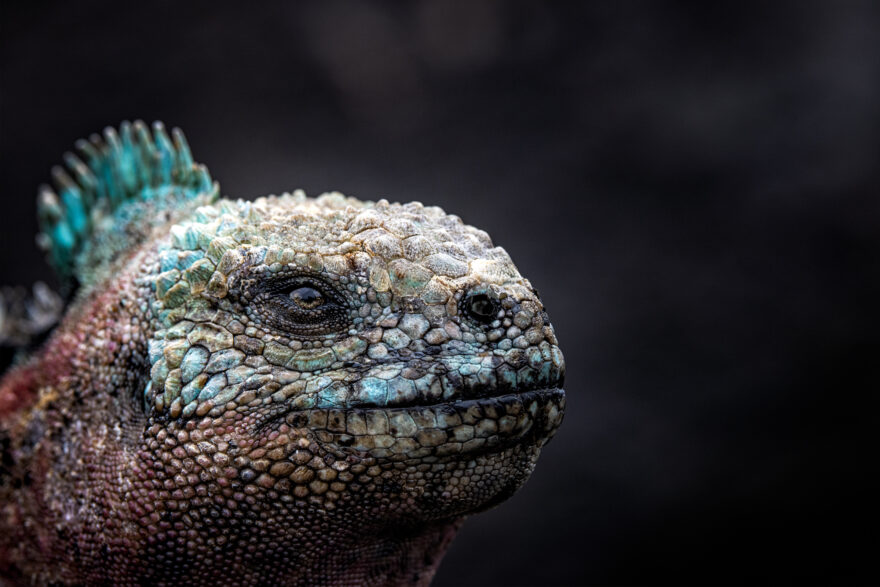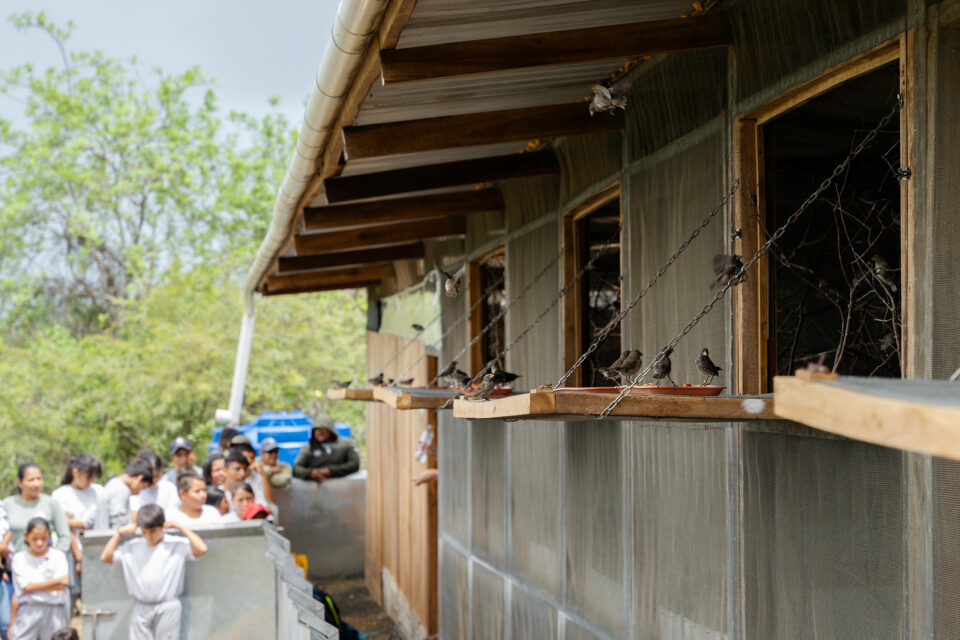

Snakes, iguanas and more… Part 2
Euan Moncrieffe was lucky to volunteer with one of our partners, Luis Ortiz-Catedral, on some of his projects in Galapagos in 2019. Here is the second of two blogs that he wrote for us about his experiences working with snakes, iguanas and more.
Lazy Lizards and Mischievous Mockingbirds
Dr Luis Ortiz-Catedral works closely with the Galapagos National Park. The Park sends rangers on every trip to assist with his research; hardened veterans who know the Islands better than anyone else. The rangers are incredibly hard workers, and I was able to learn a lot about the Islands from them with Luis’ helpful translation skills.
Not too much of my time was spent researching or hunting for land iguanas. All four expeditions involved fieldwork specifically for Galapagos racer snakes or Floreana mockingbirds. However, some land iguana fieldwork took place on Santiago and Venezia, although I was only briefly involved as the iguanas were much more difficult to process due to their strength and nasty bites. During the second expedition, we travelled to Venezia with Park rangers John, or “Cena” as he was called after the famous WWE wrestler, and Johannes, a real Tarzan of Galapagos and expert snake catcher. Back in the 1960s and 1970s, the island was used as a Santa Cruz land iguana nursery before they were reintroduced onto the main island. Today there are still many iguanas roaming the island and their health as well as numbers are still monitored closely. Eventually, Luis and I caught one scuttling under some rocks. We slowly processed the great beast as it thrashed desperately and all I could remember were the stories of the vicious bites these lizards had given to the rangers. After processing we let the iguana go and it ran into Venezia’s rocky fissures, narrow but very deep canyons formed by the fast-moving tectonic plates below the Islands.
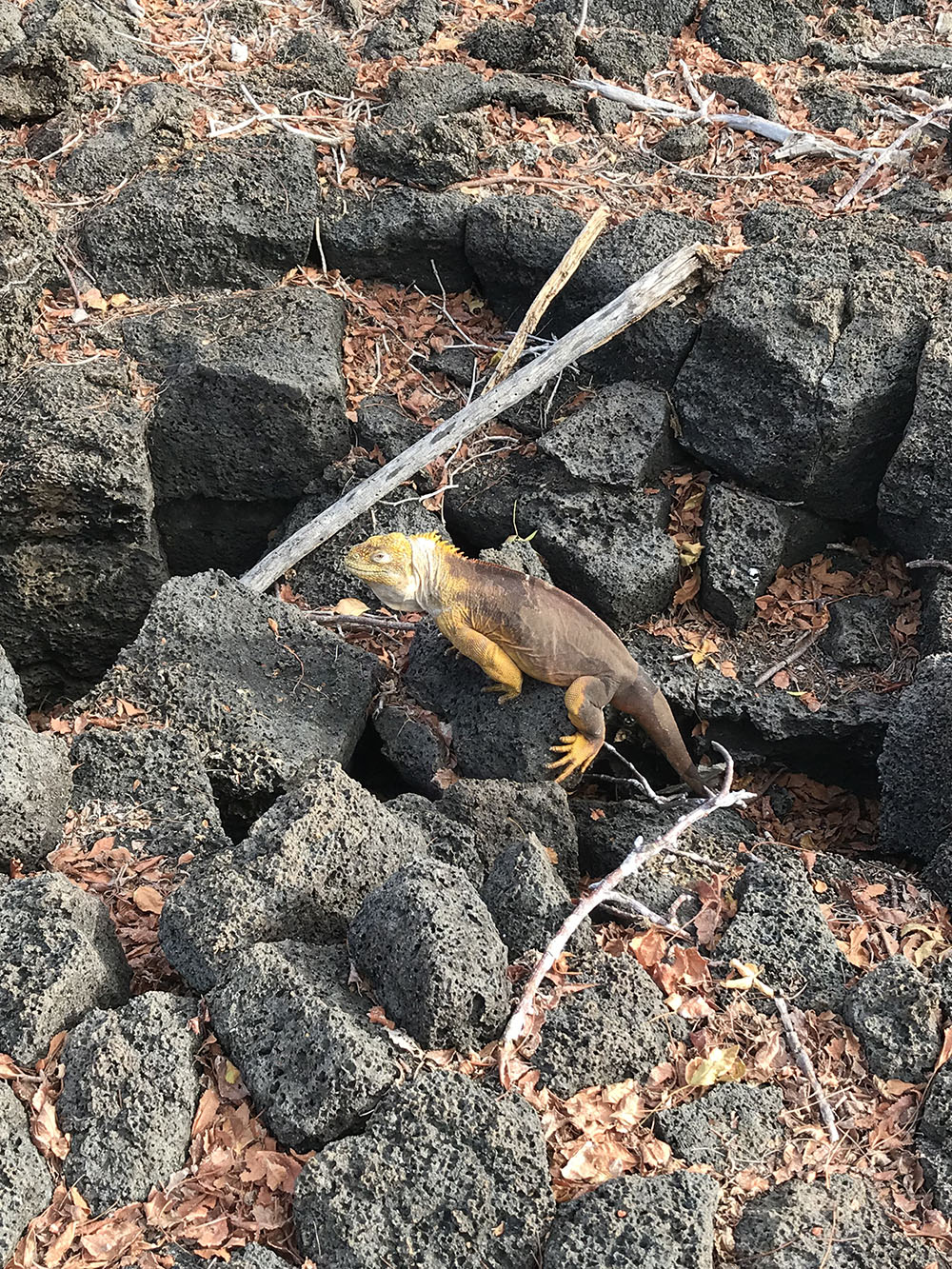
Land iguana, Venezia © Euan Moncrieffe
Over the six weeks on the Islands, one expedition was specifically concentrated on research surrounding the Floreana mockingbird. We had done plenty of work on snakes and so Luis sent Harry and I off to Champion islet, just off Floreana, to help Enzo with his mockingbird rejuvenation project. I set off onto the islet with my little bird cage and plastic insect lures confident I could easily catch all the mockingbirds we needed after seeing their tame nature, but I was sorely mistaken. Groups of mockingbirds would sit chirping high in the Opuntia cacti as one by one they would glide down to the cage to mock us. However, with time and a few pebbles thrown onto the cage to maintain their attention, we did manage to catch enough from each family for Enzo’s research. Enzo also gave Harry and I a microphone to record various distinct chirps and songs to help understand how the birds communicate within families.
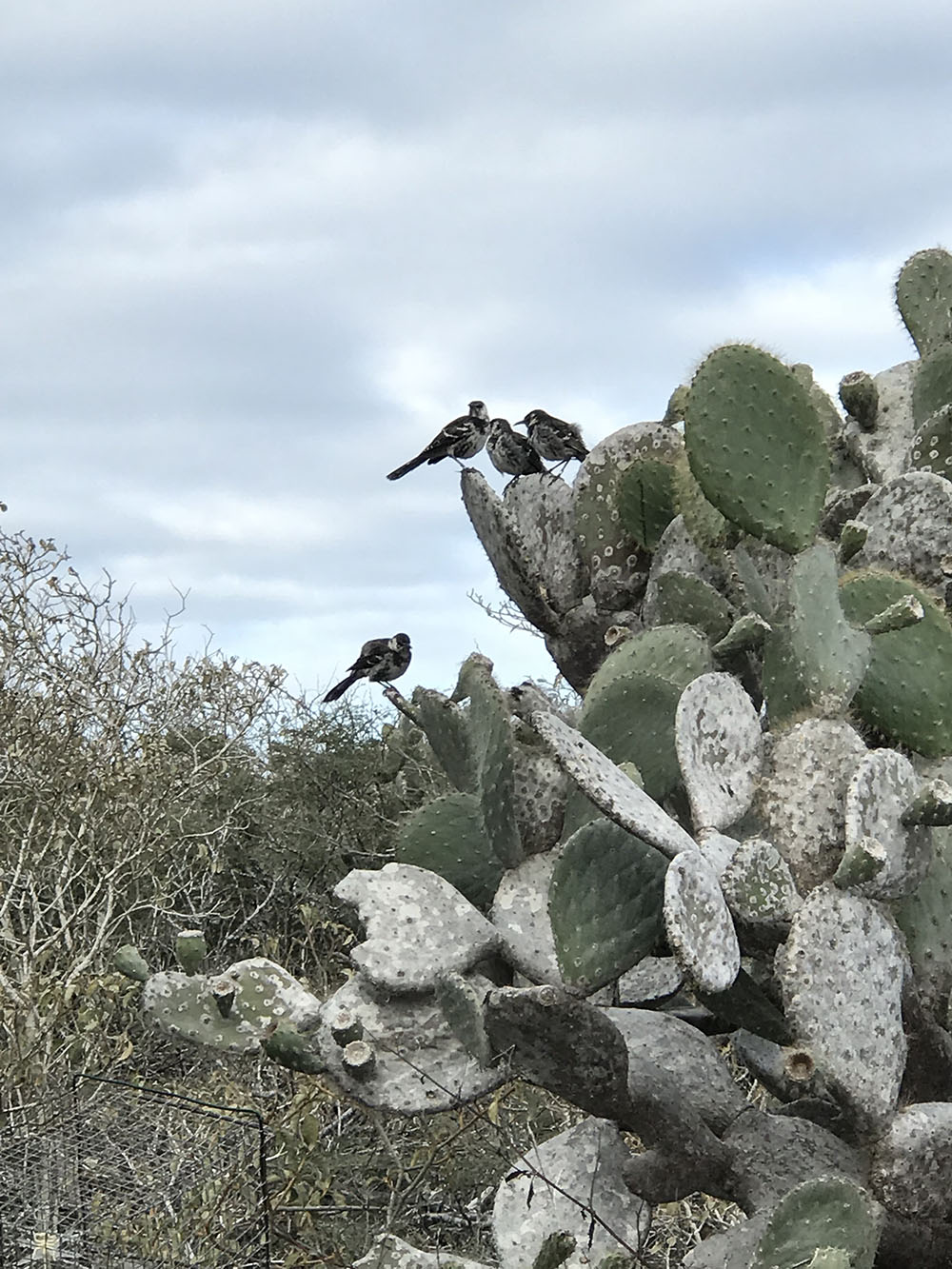
Floreana mockingbird family, Champion © Euan Moncrieffe
Chasing Racers
Luis has been co-ordinating a project for the last few years studying Galapagos racer snake species and gathering data across the Archipelago to understand the extent to which they vary across the islands. My time in Galapagos was predominantly taken up by the mysterious Galapagos racer species. I was astonished to hear how little work had been put into these species and it was stirring to hear that much of the upcoming research would be uncharted territory.
I was lucky enough to take part in three expeditions involving these iconic snakes. Each expedition was just as exciting as the next, always exploring new islands, the most notable being Pinta, home to Lonesome George, and Española which had the most beautiful oasis in the centre of the island.
My first time in the field was certainly one of the most unforgettable moments. There had been no records of snakes on Eden islet since the 1930s, a beautiful volcanic island off the coast of Santa Cruz. We were joined by Park rangers Johannes and Roberto, or “Gori”, a sprightful character. Luis and I were scaling the ridge along the top of the islet and, just as the sun’s rays were reaching us, Luis indicated a snake in the rocks waiting for its morning bask. Within a few seconds, Luis lunged forward and grabbed the sleepy snake before carefully placing into a permeable case for transport back to our boat, the Pirata. The snake shared the distinct markings of a Pseudalsophis dorsalis species with a spotted back, unlike the bold black stripes of Pseudalsophis steindachneri that still inhabits Santa Cruz. This was promising as all of the P. dorsalis populations have supposedly been wiped out on Santa Cruz mainly due to invasive mammals. The Eden populations have survived, and they offer a great model for what the Santa Cruz P. dorsalis populations would have been like.
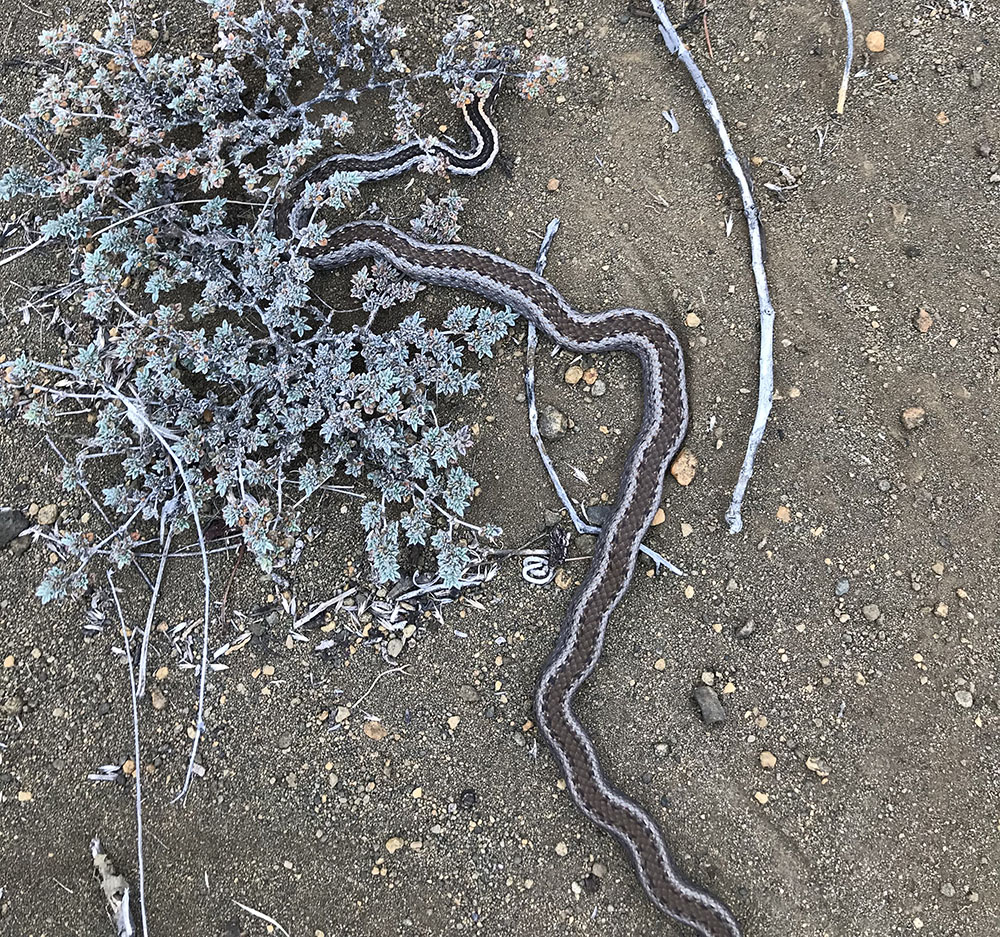
Pseudalsophis thomasi, Santiago © Euan Moncrieffe
Another highlight had to be my trip to North Seymour. During the second expedition, Diego, a curator from Universidad Indoamérica, had also joined us and was keen to take venom samples. North Seymour was an incredible island varying massively in terrain. We worked on a small open plateau at the top of the island dotted with the occasional Opuntia cacti and shrubs that had been heavily grazed on by greedy land iguanas. The P. dorsalis population on this plateau are completely unique due to their massive variation in colour; there were pink, brown, grey and even rich emerald snakes that I had not seen any other islands. The sheer number of snakes on this plateau alone was amazing. On the second day, the team caught a total of 29 snakes that all had to be carefully processed back on the Pirata. We were up late into the night counting scales and naming snakes.
Back at the apartment in Puerto Ayora, the snake work continued as Luis, Harry and I analysed hundreds of faecal samples. We searched for any indication as to the types of diet these snakes enjoy; we managed to find what we think were gecko eggs and baby shearwater feathers after comparing samples to taxidermy in the Charles Darwin Research Centre. It was the first time we have found solid evidence that small eggs and birds are part of the Galapagos racer’s diet.
Related articles

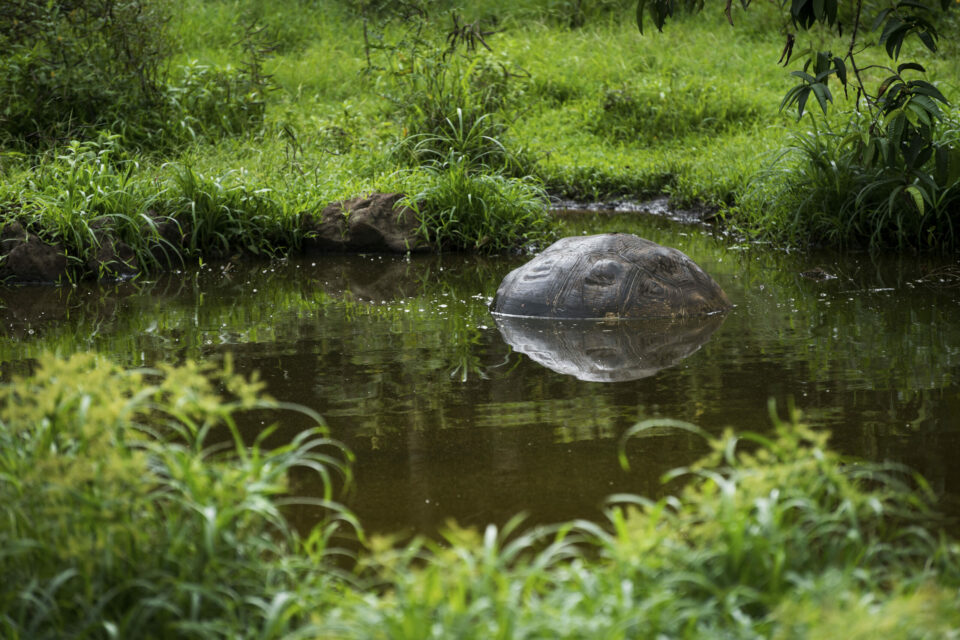
Double your donation to rewild Galapagos with the Big Give

